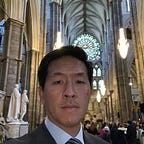With Paul Allen’s passing, I have been reflecting upon what it means to further his legacy of using technology to make the world a better place. Paul was a great philanthropist having given $2 billion to philanthropy over his lifetime. He was also a visionary technologist who believed that disruptive technology could be a faster and more impactful way to solve problems in climate, ocean health, and wildlife conservation. As Vice President of Impact at Vulcan, it’s a privilege to execute on his vision for doing good.
The Beginning
It was 2017, and having spent over 20 years leading commercial product teams, I had a mid-career crisis moment. The routine of planning, building, and selling Enterprise technology to Fortune 1000 companies year after year became monotonous and unfulfilling. Truthfully, I was considering enrolling in a culinary school program at the time just to break the cycle. Instead, I reconnected with Bill Hilf, CEO of Vulcan, and joined Vulcan as an individual contributor to assess some technology for good projects. Paul was interested in increasing the speed of execution and achieving sustainable impact. After spending time with internal project teams and listening to potential customers, I shared my feedback with Paul and Bill about building sustainable impact products at Vulcan. Shortly after this review, my role evolved to Vice President of Impact chartered to execute on this plan.
Vulcan’s Impact team is very unique. First, the team is not organized like a traditional technology firm, NGO, or foundation. It’s more like a systems integrator with in-house resources capable of building and deploying technology solutions. We are a team comprised of scientists, engineers, product managers, and business people passionate about doing good. Second, we are committed to getting better data and tools into the hands of those doing good on the front lines. In other words, we want to give them superpowers. This means that we have to be directly involved in the field to understand and prioritize customer issues and requirements. Whether it’s trying to catch illegal fishing vessels in the Pacific or protecting endangered species in Africa, we rely on our staff, contractors, and partners to keep a pulse on customer satisfaction. And third, we look to deliver impact with technology products wrapped with a sustainable business model.
Sustainable Impact
I’ve had the opportunity to participate in a number of government, multilateral, and philanthropic events where the term “sustainable philanthropy” is commonly referenced. While there doesn’t seem to be a standard definition, there is general alignment around the idea that sustainable philanthropy is when at some point, a beneficiary is able to complete a project on their own without external funding. This is an admirable goal, but rarely achieved. There’s a long history of projects that fail to meet funding goals and ultimately become abandoned due to shifting priorities of funders. As a result, sustainability programs end up as a cost sharing model across multiple funders as a way to diversify funding risks. I believe that it is possible to achieve sustainable impact with a transparent and thoughtful business model.
Our impact products focus on hard conservation problems where customers can’t afford to pay much for solutions. This is a forcing function to ensure that our products provide tremendous customer value, which in turn justifies charging customers to use. While this won’t meet any traditional investment criteria, this is a big step towards achieving sustainability. Once we feel like we have product market fit, we begin scaling to commercial markets which increase revenues and enables product innovation. Any innovations would then be shared with our conservation customers. An example of this business model is Zipline, a real time logistics company. They’ve recently stated publicly to be profitable delivering blood and medicine via drones in Africa, and in the future, set their sights to compete with UPS and FedEx in the US and Western European markets. Their strategy of delivering impact and hardening their product in Africa first will put them in a leading position once commercial drone delivery markets open. I believe that this trickle up innovation strategy that can be applied to many other impact problems.
The second part of our sustainability strategy is to establish strategic partnerships to reduce product development and operational costs. Getting costs to as low as possible allows us to work with limited customer budgets and sustain service level agreements. Examples of strategic partnerships include partnering with computing infrastructure providers to get lower than retail prices for services, working with local consulting firms to help onboard and support customers, and working with other do-good organizations to invest in underlying physical infrastructure and the human capital to use the solutions.
The Future
Going forward, we will continue to invest people and resources to shorten the time to action for enforcement organizations doing good. This includes telling a patrol ranger where to go when there’s an enforcement event, giving a patrol vessel captain real time intelligence about illegal fishing vessels, or informing scientists on where to direct conservation resources to at risk coral reefs. Bringing modern technology and best practices to these problems levels the playing field when combating illicit and destructive behavior..
Last, I’m encouraged by the feedback and commitments we’ve received from our public and private sector partners and customers. They have validated that Vulcan is well positioned to scale and have sustainable impact over the long term on the areas that we care about. However, we can’t do it alone. In addition to our efforts, there’s a clear opportunity for large companies and startups to contribute technology to making the world a better place. Incorporating best practices from commercial product development into projects doing good can improve the chances of having sustainable impact.
Paul is missed, but we are committed to continue to execute on his vision for doing good with technology.
